Now that Jeff Graves has served as president and CEO of 3D Systems (NYSE:DDD) for nearly two years, we are able to gain better insight into his leadership style. We can also see how that style has played a role in firming up what should be an extremely strong player in the additive manufacturing industry. 3DPrint.com spoke to Graves ahead of his keynote at the upcoming Additive Manufacturing Strategies summit March 1 – 3 to gain a better sense of the continued trajectory of the company.
3D Systems Becomes Liquid

3D Systems President and CEO Dr. Jeffrey Graves. Image courtesy of 3D Systems.
Key to righting the 3D Systems ship has been to divest business units that may be seen as distracting to the overall operations of the additive manufacturing solutions provider. This included not just its CAM-related division, but also its service bureau—once known as Quickparts and later 3D Systems On Demand. When Quickparts was purchased in 2011, it offered annual revenues of $25 million. A common critique of this venture, also aimed at Stratasys’s own parts printing arm, has been that print services compete directly with the printer manufacturer’s own customers. This was a view that Graves shared.
“It’s not that making parts quickly is bad business. I think it’s actually a very good business, but it’s very hard to try to be a broad provider of technology to the service bureau industry and, on the one hand trying to sell them technology, and, on the other hand, competing with them,” Graves said. “It’s inconsistent with being a wider solutions provider to the industry. I just don’t think it’s compatible. I’ve always been a firm believer you don’t compete with your customers.”
However, it wasn’t just the offloading of irrelevant assets that got the company out of immediate debt and back on solid ground. Graves also performed a bond offering that was timed properly with conditions in the debt market to ensure success. With a convertible bond at zero interest for five years, 3D Systems was able to put about $1 billion on the balance sheet.
3D Printing Management Software
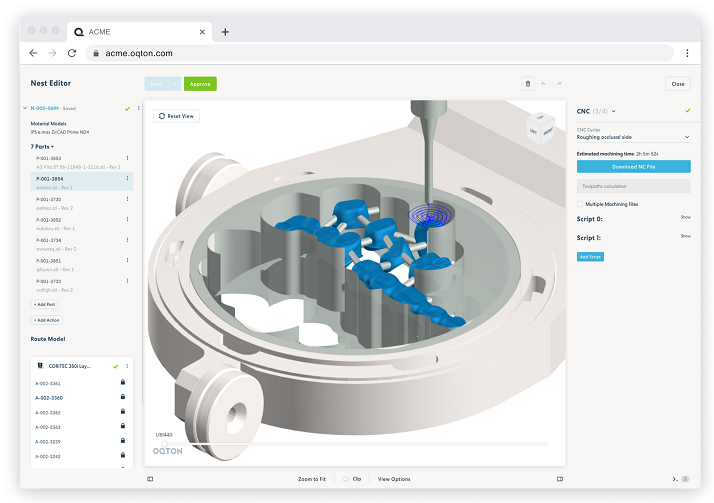
A screenshot of Oqton’s software. Image courtesy of 3D Systems.
This allowed the company not only to get rid of its short-term debt obligations but also cultivate its new business direction, which included the purchase of Oqton and Volumetric. While the former was a developer of manufacturing execution system (MES) software, the latter was a bioprinting pioneer. Both were held in high esteem. Established by ex-Autodesk employees including Dr. Ben Schrauwen, Oqton was backed by the likes of Carl Bass, Sandvik, and Fortino Capital. Volumetric was co-founded by the inventors of a stereolithography-based bioprinting technique, Drs. Jordan Miller and Bagrat Grigoryan, with the former now serving as Chief Scientist of Regenerative Medicine for 3D Systems.
Historically, 3D printers were developed for rapid prototyping, with printer OEMs failing to see how they would plug into a business’s workflow. MES is crucial to the next stage of integrating 3D printing into industrial manufacturing, as it will enable AM equipment to be managed alongside other production machines within a larger operation. For 3D Systems, Oqton will make it possible to take 3D printers, post-processing equipment, and anything else in the AM workflow and connect it with Oracle, SAP, Microsoft Factory, or any other software used to manage production operations.
3D Systems Opens Up
Typically, legacy 3D printer OEMs have closed themselves off to the rest of the market. This meant tight control over materials, machine architecture, software, and more. Now, however, we’re starting to see some changes there, as Stratasys acquired open materials startup Origin and EOS took on open architecture firm Vulcan Labs. With Oqton, 3D Systems is beginning to open up to other market players as well.
“Oqton’s software is not just a great asset for us, but for the entire industry. We’re going to keep them as a separate business unit with a firewall in place,” Graves said. “Oqton now works with many of our competitors in helping them sell their platforms to their customer base, and they can leverage this same platform to grow, as well. We think it’s great for the entire industry as it takes at least one obstacle out of large-scale industrialization of additive manufacturing.”
For this reason, 3D Systems may also consider broadening access to its printers to material partners and users. To Graves, this can have a similarly impactful result on the larger AM industry, as it would encourage other OEMs to follow suit. This, in turn, could allow 3D Systems to develop materials for other 3D printer manufacturers.
“I kind of look at materials in the same way [as Oqton]. One of our true core competencies is materials. We may head down a path of moving the entire industry toward more open systems. If we open our systems, other people will open their systems more, and then we can provide materials not only for our machines but others. However, it’s a little harder to implement than it sounds for a customer because every one of these requires process development. But if a customer wants to do it, it can certainly help in the sale of printers themselves,” Graves said. “I’m don’t believe it’s going to happen quickly, but we’re certainly very seriously looking at where does the industry really go in the future and how do we be a leader in that?”
3D Systems and Bioprinting
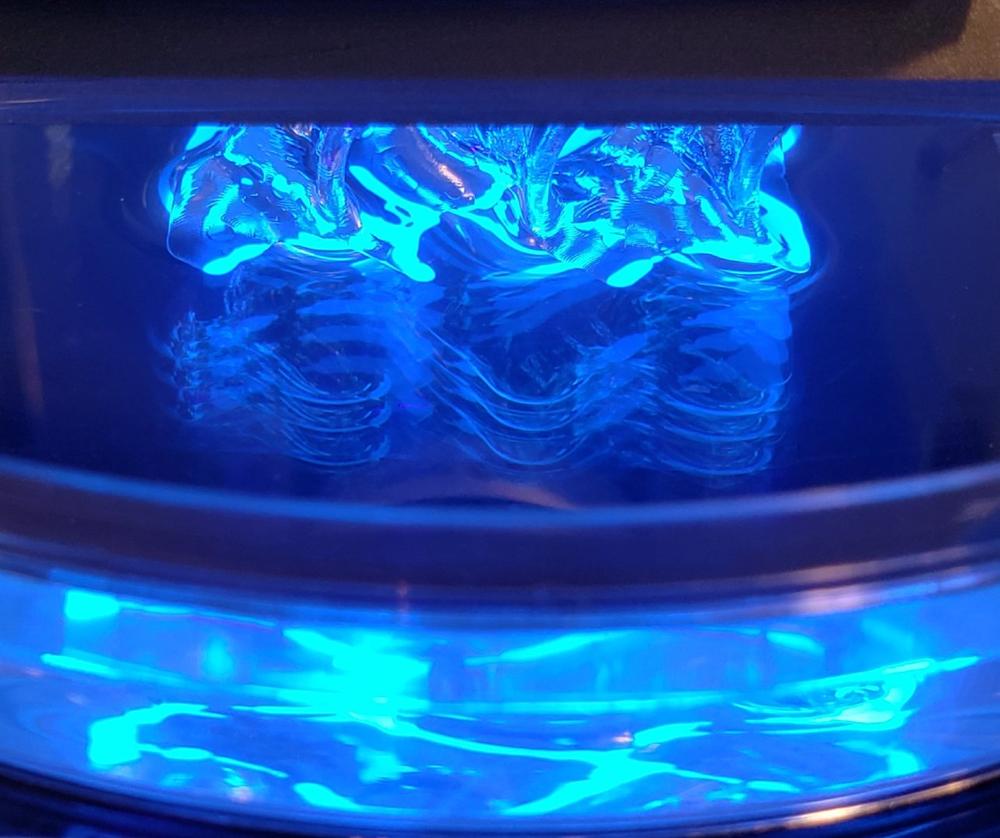
Volumetric develops custom bioprinters using its groundbreaking technology. Image courtesy of Volumetric.
The company’s newfound interest in open materials and MES seemed to trend with the 3D printing industry as a whole but it was when it came to biologics that Graves seemed to truly demonstrate a forward-thinking approach to business. The CEO suggested that, really, bioprinting is an extension of 3D Systems’ existing technology. For instance, its successful Healthcare division in Colorado 3D prints orthopedic devices for implantation. Bioprinted tissue would really be just another type of implant.
“For several years, our healthcare business has been focused primarily on orthopedic implants—implanting a foreign object in a person’s body to help them heal and recover from trauma,” Graves said. “But when you extend that thinking—you say, ‘If instead of putting a foreign object in a patient’s body, what if we could actually put something in that’s made out of the same substance as the patient’s body to let it completely heal, that becomes really interesting.”
In this way, the company’s work with United Therapeutics to 3D print lung tissue is a more organic iteration of what it has already done for patient-specific medical devices. Similarly, the process used to produce 3D printed, vascularized lung matter is a modified version of 3D Systems’ Figure 4 technology. In this case, however, instead of 3D printing resin at quick speeds, the regenerative medicine team is fabricating biocompatible materials that can be seeded with stem cells. And to head that team, 3D Systems took on Dr. Jordan Miller, whose research has focused on developing similar technology for bioprinting.
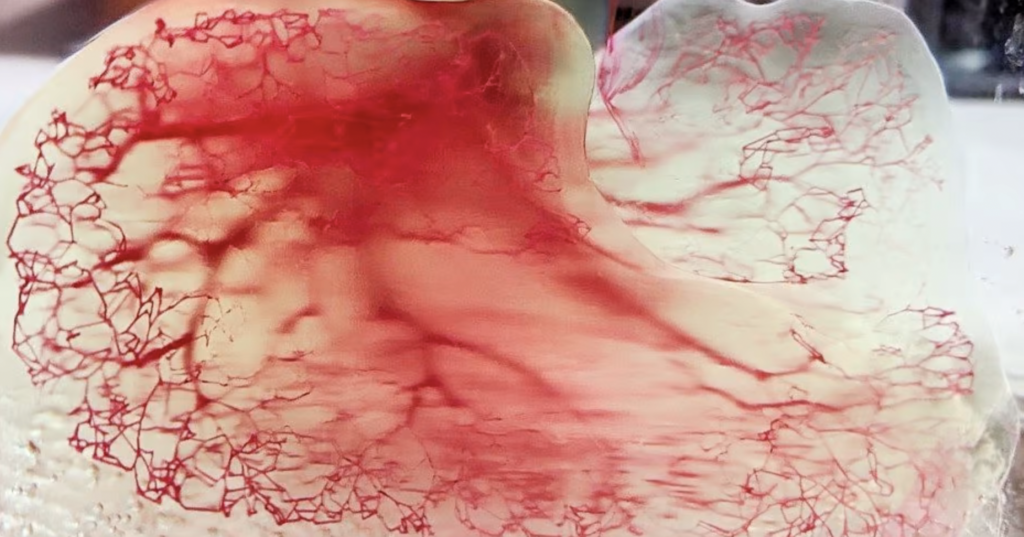
Human vasculature model created using 3D Systems and United Therapeutics’ Print to Perfusion process. Image courtesy of United Therapeutics.
“Now, we’re branching out into other parts of the body. We formed some partnerships in this area and we’ll continue to do that,” Graves said. “But, we needed internal biological expertise. We’ve had great materials, and we’ve had people that understood how to work with those, but we didn’t have biologists. So, what Volumetric brought us in that acquisition was the biological expertise. Now with that horsepower, we are aggressively looking at the human body. There are still a lot of barriers to overcome, and we’ve got FDA approvals to gain. It takes time, but it really expands our healthcare focus from simply orthopedics to biologics. It’s my guess that the potential of biologics will someday equal or be even greater than the potential of 3D printing in other application areas .”
This, I thought, was a particularly profound point. This is not just because I had a godmother and mother who could have benefitted from bioprinted transplants. This is not even because, as of 2021, there were over 100,000 people awaiting a kidney transplant and more than 550,000 relying on dialysis. Really, biological material will become increasingly crucial to a new age of manufacturing.
Not only will plastics be replaced by material that isn’t derived from fossil fuels, but biological matter may even be necessary for the creation of living structures. Imagine devices that aren’t just inspired by nature in terms of aesthetic design, but that actually incorporate organic matter to drive their function. We already know that kidneys are much better at filtering waste than a dialysis machine. Imagine industrial kidneys for filtering waste from production sites. Of course, this is decades down the road, but it inspires me that 3D Systems is one of the few companies that is heading down that road.
3D Systems Does Extrusion
In 2021, 3D Systems announced that it would partner with contract manufacturer Jabil to develop a high-speed material extrusion process. While we wait for progress to be announced regarding that project, the company went onto purchase two unique firms in the material extrusion space. There was Kumovis, a German startup dedicated to medical 3D printing, and Titan Robotics, a U.S. maker of large-format extrusion 3D printers.
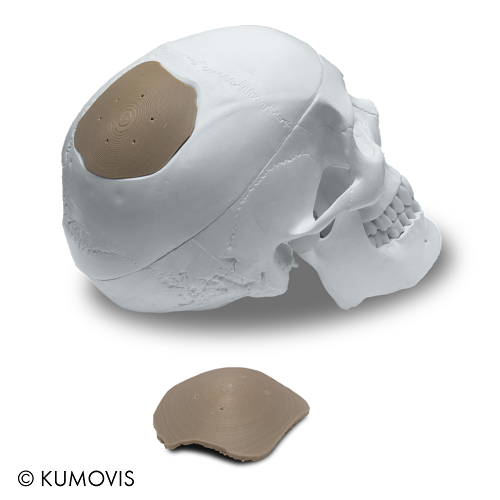
Kumovis cranial implant. Image courtesy of Kumovis.
While its closest competitor, Stratasys, moved into 3D Systems’ own territory with the acquisition of stereolithography businesses Origin and RPS, 3D Systems countered by moving into Stratasys space. Kumovis already complements 3D Systems’ robust Healthcare division with a specialty 3D printer designed to use high-performance, biocompatible plastics in an FDA-compliant manner. Titan Robotics pushes the company directly into production-scale extrusion with its massive pellet-based 3D printing technology.
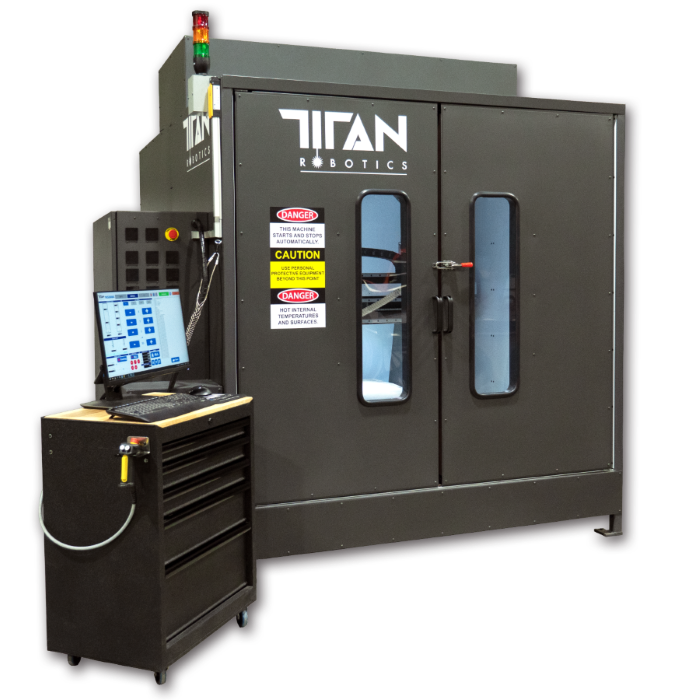
The large-scale Atlas 3D printer from Titan Robotics. Image courtesy of Titan Robotics.
“As the leading AM solutions provider across Industrial and Healthcare markets, we’re committed to meeting the largest possible range of our customers’ needs,” Graves said. “To further support our customers and accelerate the adoption of additive manufacturing, we announced two strategic acquisitions this week – Titan Robotics and Kumovis. These companies are leaders in extrusion technology, which complements 3D Systems’ broad polymer technology portfolio and opens significant new market opportunities for us. By combining the engineering and application expertise of Titan Robotics and Kumovis with the global reach of our sales, service, and applications teams, we are further well-positioned to support our customers across the full range of our markets.”
Altogether, we’re seeing 3D Systems consolidate a number of relevant firms that strengthen its portfolio. Now, it has just about every type of 3D printing process under its belt, but there are still more that we might anticipate. This includes carbon fiber 3D printing and higher throughput sintering, as well as binder jetting. Given that Graves is unafraid of betting on novel technologies, like bioprinting, we might even see 3D Systems explore more functional materials, like conductive inks.
Under its current management, everyday is a surprise with 3D Systems and, so far, those surprises have proven to be interesting, if not pleasant ones. To learn more about the company’s exciting trajectory, tune into Graves’s keynote at Additive Manufacturing Strategies, March 1 – 3, 2022.
Feature image: a lung model from United Therapeutics organ manufacturing therapeutic platform. Image courtesy of United Therapeutics.
Subscribe to Our Email Newsletter
Stay up-to-date on all the latest news from the 3D printing industry and receive information and offers from third party vendors.
You May Also Like
Gorilla Sports GE’s First 3D Printed Titanium Cast
How do you help a gorilla with a broken arm? Sounds like the start of a bad joke a zookeeper might tell, but it’s an actual dilemma recently faced by...
Nylon 3D Printed Parts Made More Functional with Coatings & Colors
Parts 3D printed from polyamide (PA, Nylon) 12 using powder bed fusion (PBF) are a mainstay in the additive manufacturing (AM) industry. While post-finishing processes have improved the porosity of...
$25M to Back Sintavia’s Largest Expansion of Metal 3D Printing Capacity Since 2019
Sintavia, the digital manufacturing company specializing in mission-critical parts for strategic sectors, announced a $25 million investment to increase its production capacity, the largest expansion to its operations since 2019....
Velo3D Initiates Public Offering in a Bid to Strengthen Financial Foundations and Drive Future Growth
Velo3D (NYSE: VLD) has been among a number of publicly traded 3D printing firms that have attempted to weather the current macroeconomic climate. After posting a challenging financial report for 2023,...































